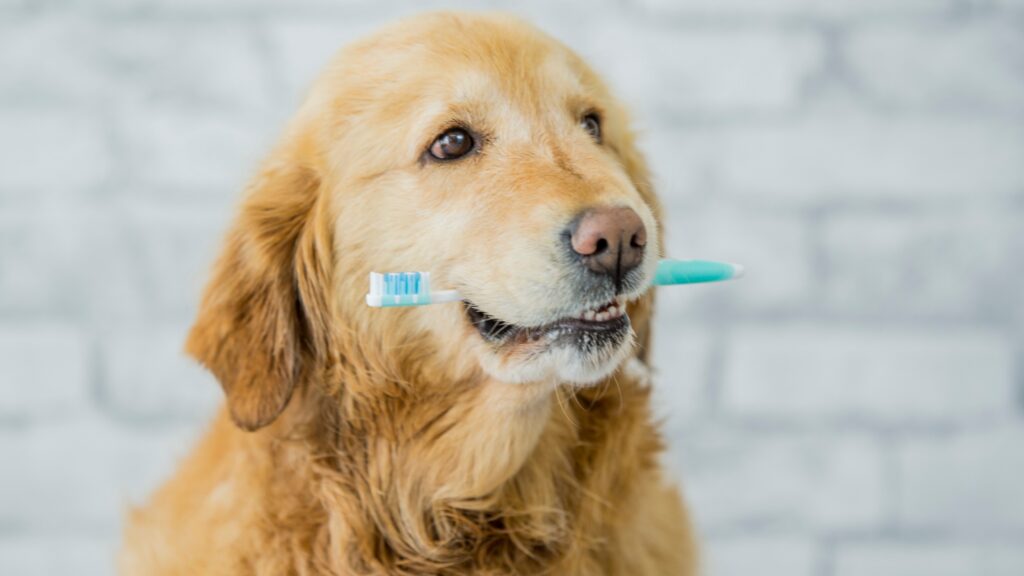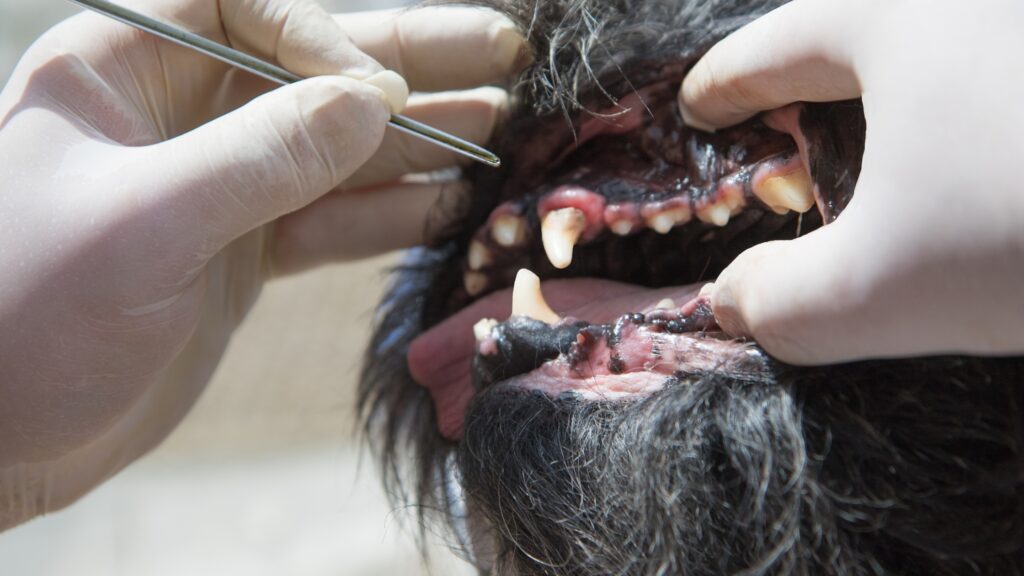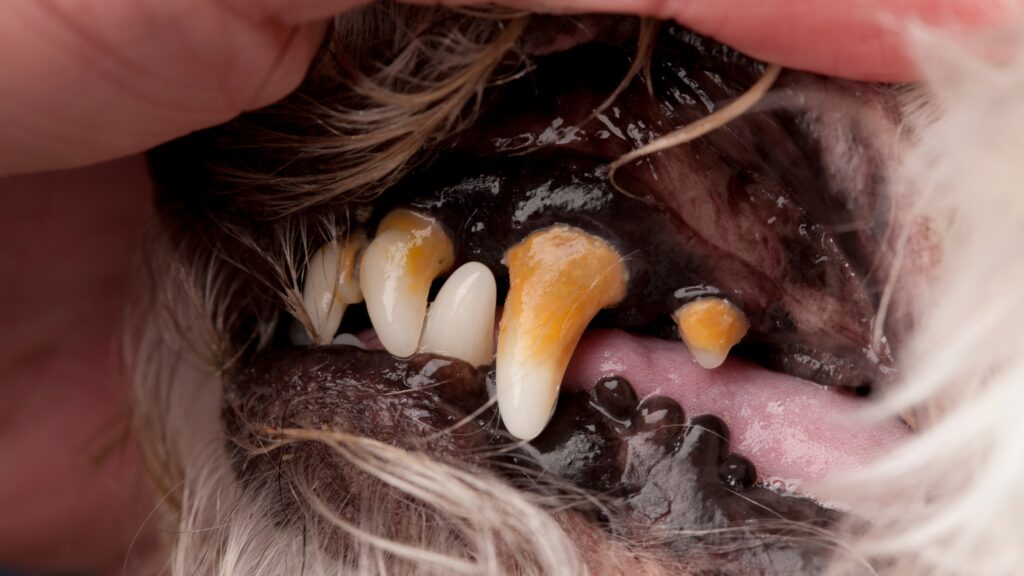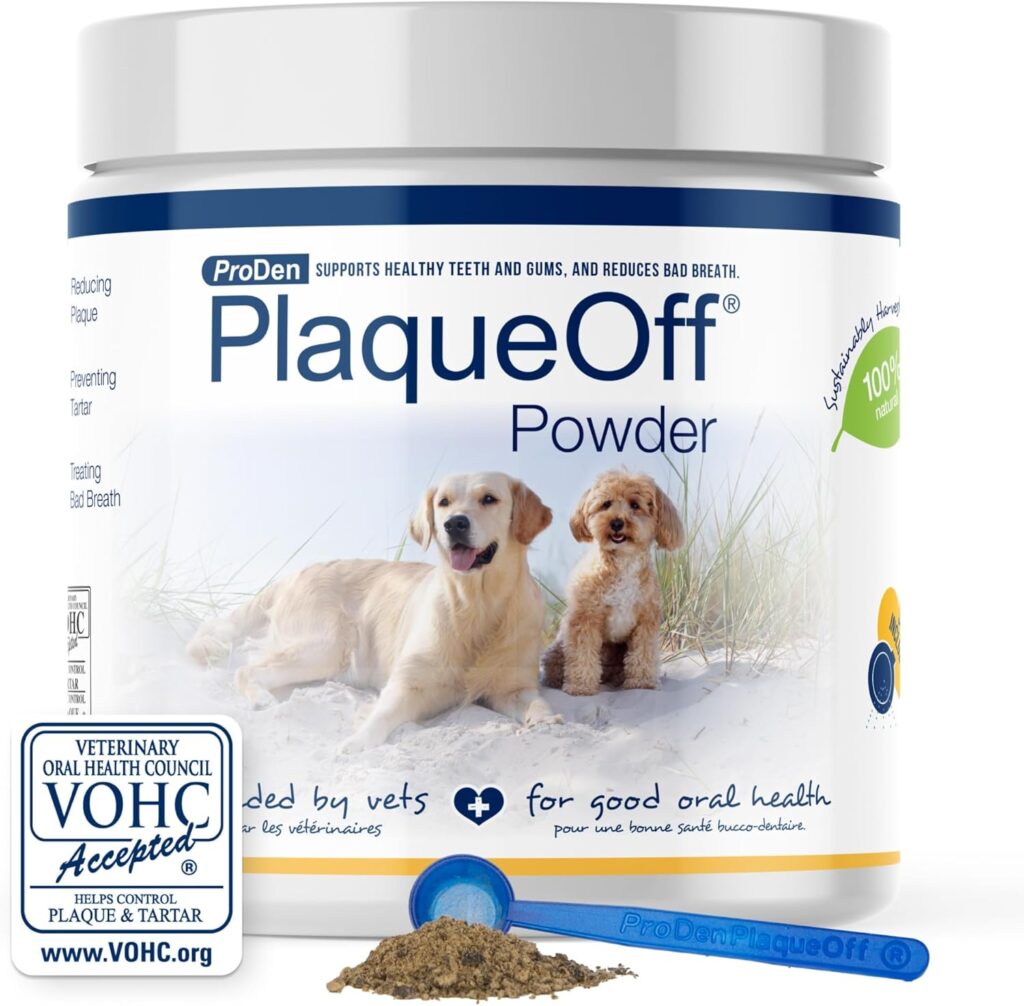You might not think much about your dog’s dental health, but did you know that common dental problems in dogs affect up to 80% of them by the time they’re three years old? That’s a staggering number! And it’s not just about bad breath or a bit of tartar.
Dental problems in dogs can lead to serious health issues if left unchecked.
Let’s take a closer look at some of the most common dental issues in dogs and how you can help prevent them.

Tooth Decay
Just like with humans, tooth decay is one of the most common dental problems in dogs.
Bacteria in your dog’s mouth break down food particles, producing acid that erodes the tooth enamel. This can lead to painful cavities, making it hard for your dog to chew and enjoy their meals. If your pup has been chewing less enthusiastically or avoiding their favorite crunchy treats, tooth decay could be the culprit.
A key part of preventing tooth decay is keeping your dog’s teeth clean, but if you’re wondering whether dental chews and toys actually benefit your dog’s teeth, I’ve got good news for you. These products can be incredibly helpful in maintaining your dog’s dental health.
Chewing on toys and treats specifically designed for dental care helps to mechanically remove plaque from their teeth, reducing the buildup of harmful bacteria that can cause tooth decay. Maricel actually written a whole blog about this, which you can check out here.
However, it’s important to remember that while dental chews and toys are great at helping to reduce plaque, they shouldn’t replace regular brushing. Combining these chews with brushing and routine dental check-ups gives your dog the best defense against tooth decay and other dental issues.
Gingivitis

Gingivitis is another common issue that can sneak up on your dog. It’s an inflammation of the gums (also called gingiva) and can cause redness, swelling, and pain.
You might notice that your dog’s gums look a little redder than usual, or they might seem uncomfortable when eating. If left untreated, gingivitis can progress into a more serious condition called periodontitis, which we’ll get into next.
Thankfully, gingivitis is reversible with proper dental care. Regular brushing, dental cleanings, and using products that promote gum health can help keep gingivitis at bay.
Periodontitis
Periodontitis is an advanced stage of gum disease that occurs when gingivitis is left untreated.
It leads to the destruction of the tissue and bone surrounding your dog’s teeth, which can ultimately result in tooth loss.
Ouch! Not only is periodontitis painful for your dog, but it can also affect their overall health. The bacteria from the infected gums can enter the bloodstream, potentially causing infections in the heart, liver, and kidneys.
If your dog is diagnosed with periodontitis, your vet will likely recommend a deep dental cleaning and possibly antibiotics to address the infection.
To prevent periodontitis from developing in the first place, keep up with regular dental care and watch for any signs of discomfort in your dog’s mouth.
Bad Breath
Let’s be honest – dog breath isn’t always pleasant. But if your dog’s breath is especially foul, it could be a sign of an underlying dental issue.
Bad breath, or halitosis, is often caused by bacteria and food particles lingering in your dog’s mouth. While it might seem like a minor issue, bad breath can be an indicator of tooth decay, gum disease, or even a systemic infection.
The good news is that improving your dog’s dental hygiene can help freshen their breath. Regular brushing, dental treats, and water additives designed to combat bad breath can all make a big difference.
Yellow or Brown Teeth: Tartar Buildup

Have you noticed that your dog’s teeth are looking a little yellow or brown? That’s probably tartar buildup.
Tartar is a hardened form of plaque that sticks to your dog’s teeth and can be tough to remove without a professional cleaning. Over time, tartar can lead to gum disease and other dental problems.
The best way to prevent tartar buildup is through regular brushing and using products that help reduce plaque. Speaking of which, let me tell you about a product that has made a big difference for my dog.
ProDen PlaqueOff Powder
If you’re like me and your dog isn’t the biggest fan of getting their teeth brushed, let me introduce you to ProDen PlaqueOff Powder. This stuff has been a game-changer for my dog’s dental health. It’s a natural powder that you sprinkle over your dog’s food, and it helps reduce plaque and tartar, freshen bad breath, and support overall teeth and gum health.
Photo Credit: ProDen

I’ve been using it for a while now, and I’ve noticed a significant improvement in my dog’s breath and the cleanliness of their teeth. Plus, my vet has even commented on how healthy my dog’s gums look! It’s an easy, hassle-free way to help maintain your dog’s dental health without having to wrestle with them over a toothbrush.
You can check it out here on Amazon.
Don’t Forget Those Vet Visits!
Even with all the at-home care, it’s important to schedule regular dental check-ups with your vet. They can spot issues you might not notice and provide professional cleanings that make a huge difference.
Plus, your vet can recommend the best products or treatments for your dog’s specific needs.
Final Thoughts
Your dog’s dental health is a vital part of their overall well-being.
Remember, prevention is key, and a little bit of daily care goes a long way in avoiding serious dental problems down the road. So, grab that toothbrush (or ProDen PlaqueOff Powder), and keep your pup’s smile shining bright!